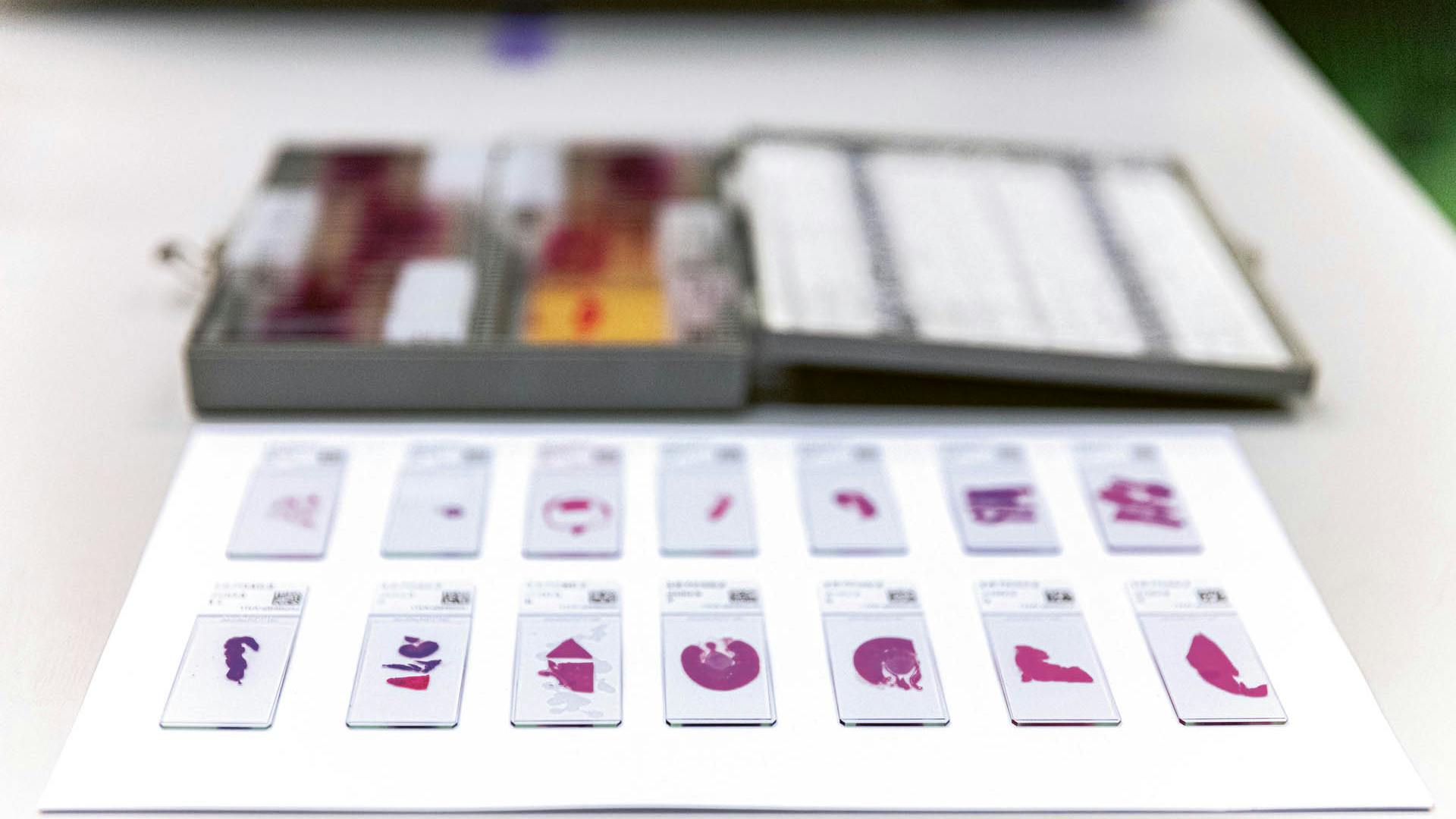
Groundwork for a digital revolution
The Pathology 2.0 project from the internal start-up platform Genesis Labs has not only advanced pathology at Novartis, it has also inspired a European initiative to create a global, publicly available resource to accelerate the entire field of digital pathology.
Text by K.E.D. Coan, photos by Adriano A. Biondo



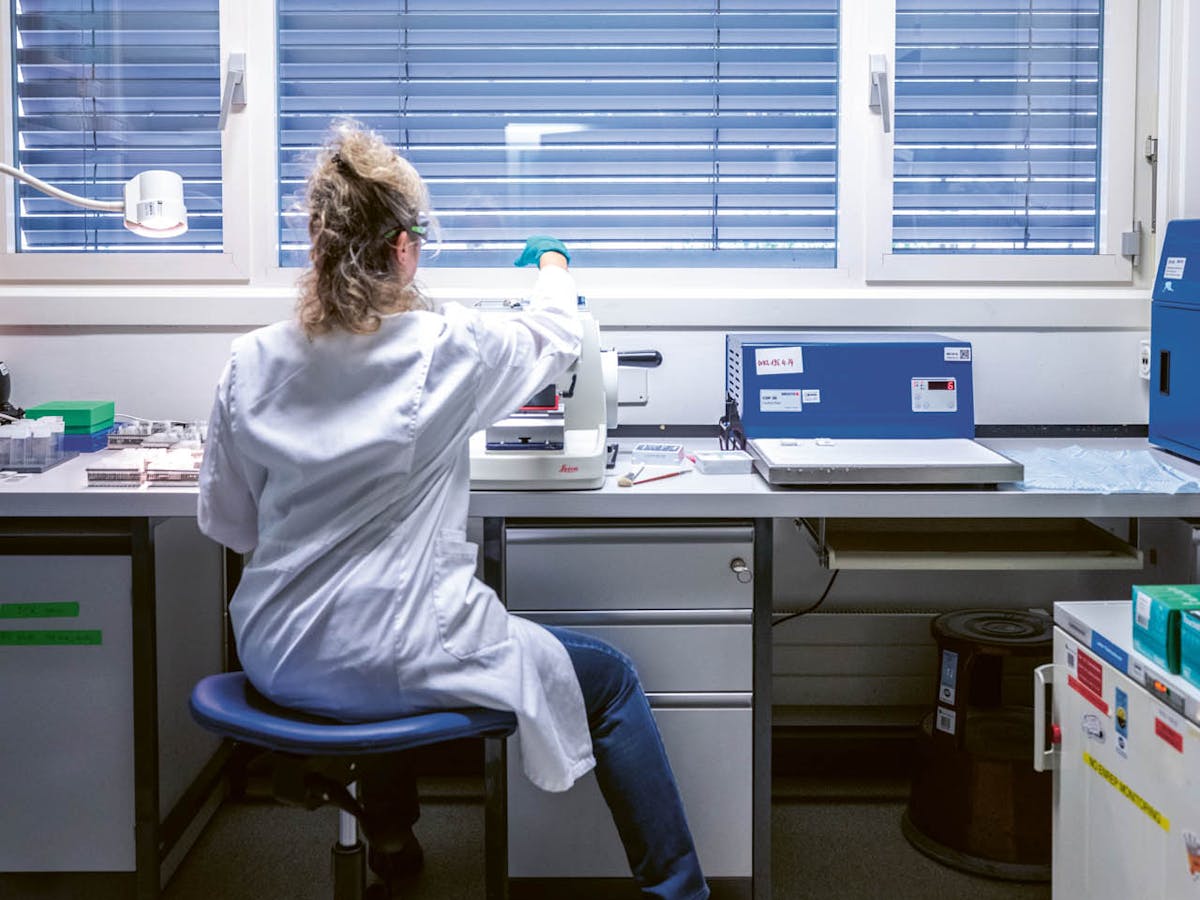

Aline Piequet prepares the cell samples in the traditional way.
 Table of contents
Table of contents A match in the making
A match in the making Results in record time
Results in record time Assembling a global resource
Assembling a global resource Cultural ambassadors
Cultural ambassadorsPublished on 01/06/2020
In the 1970s and 1980s, DNA sequencing and other biotechnological advances enabled a surge of molecular and genetic data. While each new discovery furthered its field incrementally, it soon became clear that this growing body of knowledge would have the most scientific value and potential if it was pooled together in a centralized, publicly available resource for researchers around the world.
This was the mission of the National Center for Biotechnology Information, NCBI, which the US National Institutes of Health established in 1988. Since then, the NCBI’s databases and tools have been staples for researchers across molecular biology, biochemistry, bioinformatics, and genetics.
“We wouldn’t be anywhere close to where we are today in these fields without the NCBI,” declares Pierre Moulin, a pathologist at the Novartis Institutes for BioMedical Research (NIBR) and project leader of the Pathology 2.0 Genesis Labs project, a cross-functional endeavor to fuse digital technology and pathology.
Pathology, too, is at a tipping point. Increasingly powerful computational tools can now collect, analyze, and mine collections of pathology data that have been far too vast for human pathologists to comprehensively study in the past.
When the Pathology 2.0 team proposed to teach computers how to identify different tissues, this was precisely the type of high-reward exploratory project that is encouraged by the Novartis Genesis initiative, which is designed to further a start-up spirit within the company. Although the 18-month-long funding ended in June of 2019, the team’s accomplishments have been significant enough that their work will continue as a joint initiative between Preclinical Safety and NIBR Informatics.
Beyond this work, Moulin and his colleagues also knew that their progress – and that of the entire field – would be limited by the size of the available data sets. This motivated Moulin to spearhead an Innovative Medicines Initiative (IMI) to develop the equivalent of the NCBI for digital pathology.
“It’s quite ambitious, but my idea is to create a publicly available resource that will do for digital pathology what the NCBI has done for genetics, genomics, and bioinformatics.”


The samples are cut into very fine strips ...
Pathologists decipher diagnoses from the appearance of cells and tissues, which are sandwiched as razor-thin slices between glass or plastic slides. In a pharmaceutical context, pathology is particularly important for uncovering clues about the toxicity of potential treatments.


It takes nearly a decade for pathologists to learn to recognize all the many possible conditions. But in the preclinical safety setting – where tissues are usually healthy – pathologists spend as much as 80 percent of their time simply checking that tissues look normal.
“Pathologists are highly trained and with incredible knowledge of disease and intellectual ability, but when they are examining mostly normal tissues from toxicology studies, their role is to act as a robot most of the time,” explains Page Bouchard, Vice President and Global Head of Preclinical Safety. “This work is important and it has to be done very well, but if a computer could do that routine work, that would enable pathologists to focus on higher-value intellectual work, such as understanding mechanisms of action and making recommendations for drug discovery and development.”
In addition to the repetitive nature of their work, pathologists have historically been limited to summarizing the complexity of each image in a brief written report. The resulting archives are consequently abridged and difficult to mine. But machine learning – a computational method that mimics how human brains learn – offers potential solutions for many of these drawbacks.
“Pathology is a visual science based on pattern recognition – which is an area where machine learning excels,” says Bouchard, who became a mentor for the Pathology 2.0 team. “It’s such a ripe field for the application of artificial intelligence.”
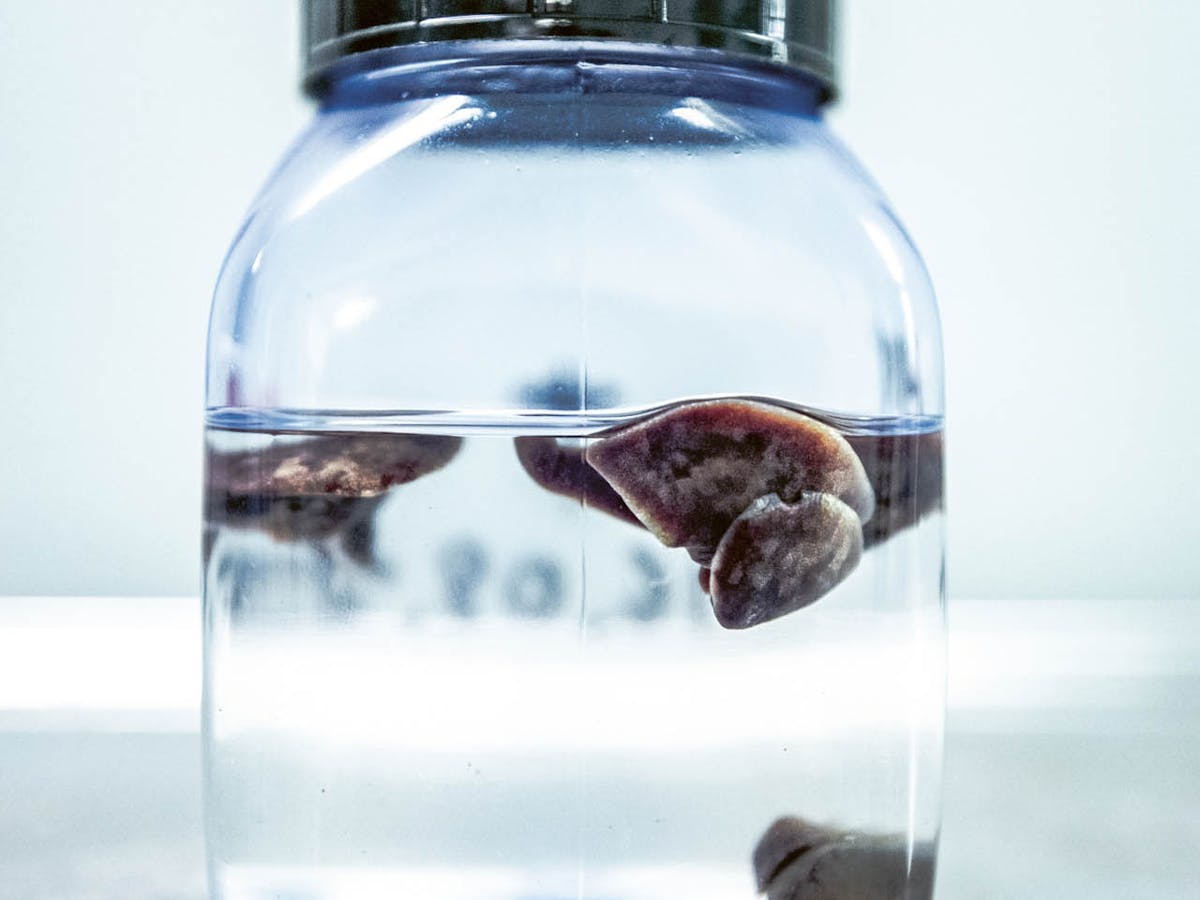

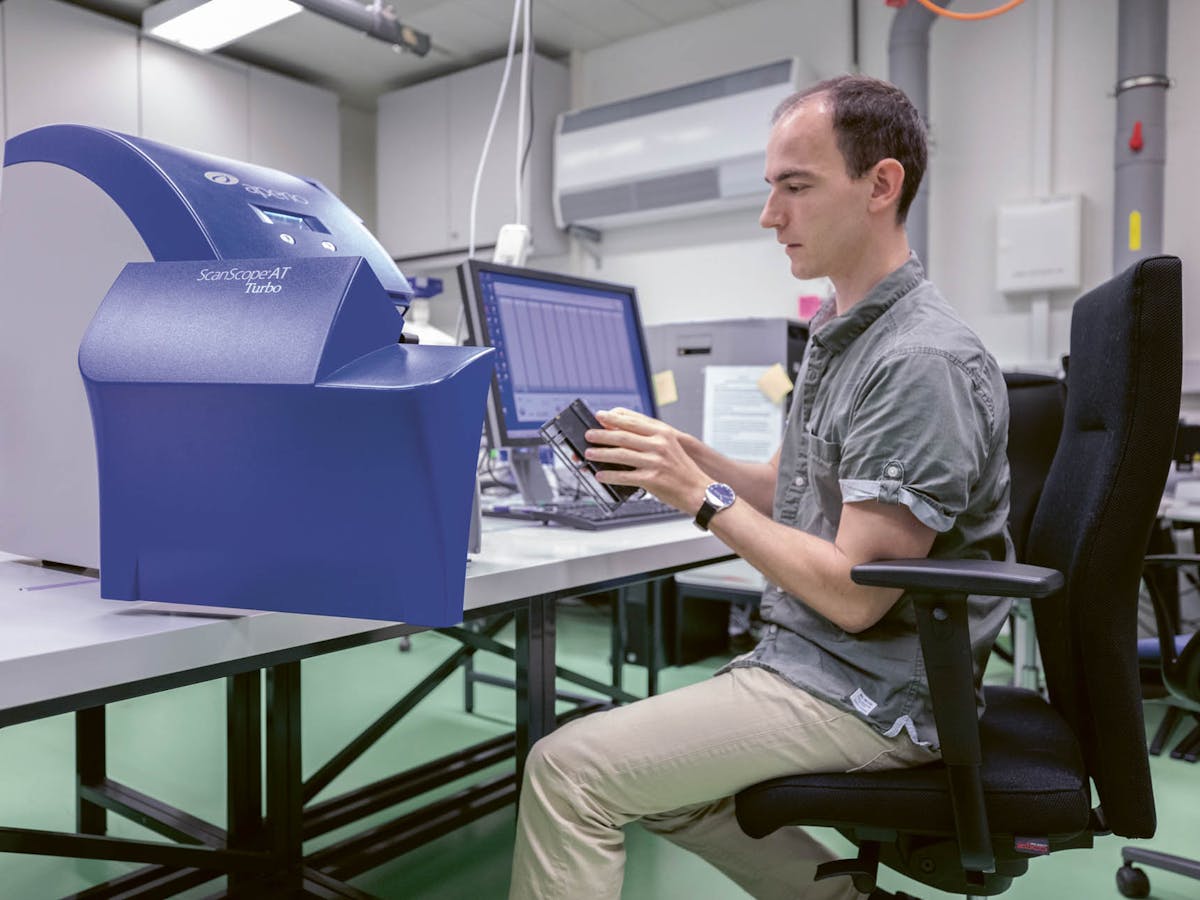

... and then put on slides.
The team – Pierre Moulin, Holger Hoefling, Tobias Sing, Imtiaz Hossain, and Oliver Turner, along with numerous additional volunteers* – went on to develop training models to identify tissues in rats, and additional models for other species, including humans. They also dramatically increased the speed of the process, reducing the time it takes to implement and run a model from several months to only a couple of days.
“We now have the evidence proving that it’s possible to teach a computer how to recognize different tissues under a microscope,” declares Moulin. “Our research is also quantifying features in a way that was previously inaccessible, so for the first time we can do real data mining from tissue morphology.”
Another particularly exciting result is that the computational models have been distinguishing characteristics that the team hadn’t specifically taught them.
“When you see that the models pick out tissue structures that you didn’t teach them, then you know you’re on the right track,” says Holger Hoefling, Lead of Scientific Data Analysis, Machine Learning and Quantitative Analysis. “We’re very happy to see those results.”
A project worth continuing
The team’s progress has been so compelling that they had little trouble convincing NIBR Informatics and Preclinical Safety to fund a joint initiative to carry on the work. The next objectives include deploying and partially automating quality control models, and also working further towards models to reduce the amount of time pathologists spend on routine tasks.
But beyond this work, Moulin realized that they needed something even bigger to truly advance the field. “Knowing how to build models is a critical resource, but another critical resource is greater access to histological slides,” says Moulin. “To build the groundwork for development of future models, we need to focus on this too.”


A view of Pierre Moulin’s office, where he and his colleagues discuss the digitized pathology slides.
“Many artificial intelligence pathology companies are working with very modest sample sets,” explains Moulin. “If we really want digital pathology to be successful, we all need unrestricted access to a large amount of slides – and this doesn’t exist anywhere currently.”
To create such a resource, Moulin began contacting industry partners as well as the board of the Innovative Medicines Initiative (IMI), the world’s biggest facilitator of public-private partnerships in the life sciences. Together with the IMI and the European Federation of Pharmaceutical Industries and Associations (EFPIA), Moulin wrote a proposal for the development of a publicly available repository of digital slides from hospitals, research centers, and pharmaceutical companies. The funding is valued at 70 million euros, including 32 million from the European Union and 38 million euros worth of in-kind contributions from pharmaceutical companies – 6 million of which is from Novartis – in the form of millions of annotated digital slides.
The IMI published the new call, “Central repository of digital pathology slides to support the development of artificial intelligence tools,” in June 2019. The call is open to consortiums of universities, research centers and small and medium-sized companies, and the funding is intended to support the project for six years beginning in 2020.
“Our objective is to share this resource across Europe and the world to accelerate the development of digital pathology in a noncompetitive way – the pharmaceutical partners will receive no money from the initiative,” says Moulin, who is heading the industry side of the consortium. “This work opens a realm of possibilities for better understanding diseases and augmenting pathologists’ contributions to determining patient prognosis and treatment responses.”
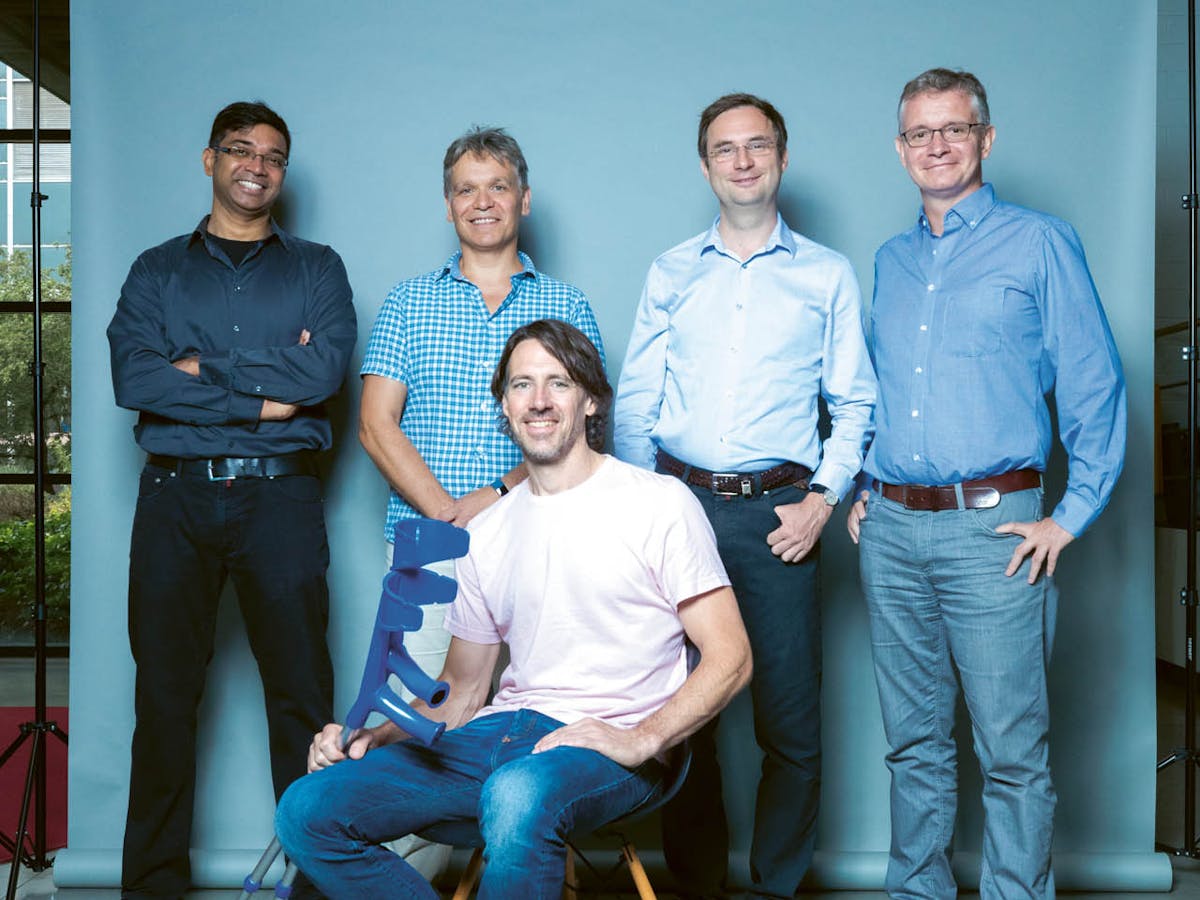

Imtiaz Hossain, Alessandro Piaia, Kuno Wuersch (sitting), Holger Hoefling and Pierre Moulin.
“The speed, agility, passion, and entrepreneurship of the Genesis Labs teams have been absolutely astounding so far – and their feedback has been overwhelmingly positive,” says Ian Hunt, Head of Novartis Genesis Labs and one of the founders of the initiative. Since the first round, the initiative has expanded to Global Drug Development and Novartis Technical Operations, and has funded more than a dozen project teams to explore and develop their homegrown nascent ideas.
The Pathology 2.0 team is already championing the new styles of working that they experienced during their Genesis Labs project.
“The very particular dynamic of the Genesis Labs initiative was key to our success,” explains Moulin. “When you’re working with a diverse group of scientists who are volunteering to contribute as best they can – rather than representing their line functions – then everyone is influencing and motivating each other and it makes the project more rewarding and much faster.”
“The project would have been very hard without the highly interdisciplinary setup of the Genesis Labs initiative,” adds Hoefling. “Our results show that this new prototype of working, created by the Genesis Labs, can give great outcomes.”
* Additional team members include, Arno Doelemeyer, Carlo Ravagli, Chandra Saravanan, Elaine Tritto, Gianluca Santarossa, Michael Steeves, Vincent Romanet, and Wolfgang Zipfel.



